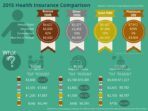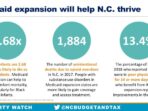Medical Insurance Group Australia – In March 2024, the 79th, 023 insured cover increased compared to December 2023.
The biggest pavement growth during the quarter was 10,865 people between the ages of 40 and 44. The highest net growth (given the movement between the age groups) was 0-4 with an increase of 27, 689 people.
Medical Insurance Group Australia

Most adults with hospital cover (88.4%) have a certified age of 30 arrival, without a penalty.
Overseas Workers (ovhc)
At the end of March 31, 2024, at the end of the quarter, there were 1, 019, 071 people with a certified age of arrival of more than 30 and underwent eternal health cover; People who pay sentences in the previous 12 months to 68, 279, net growth. People with the arrival certified at the age of 30 (without a penalty) had a net growth. During the year 115, 132, 122, 002 people were removed after being loaded for ten years.
March 31, 2024, 14, 807, 610 people, or 54.6% of the population, had some kind of general treatment cover. Compared to the December quarter, 93, 067 people grew. In March 2024, the general treatment policy of 47, 389 increased, led mainly by a policy, which increased by 27, 064 from 12 months on March 31, 2024, the number of persons secured with a general cover of Treatment has increased by 315, 510.
Overall (additional) treatment according to age and data graphs in this report shows data on people who have a general treatment policy covering additional services, regardless of other processing included in the product. This excludes general treatment policies that do not cover additional treatment.
In March 2024, the quarter grew by 82, 149 people with general (additional) attitudes. The highest net growth of the dress after ranking the movements between the age group was 28, 770 people from 0 to 4 age groups.
Student Health Cover For International Students In Australia
In March 2024, insurers paid $ 4, $ 286 million in hospital treatment benefits, which was 4.13% less than in December 2023. Hospital treatment benefits consisted of:
The paid age group for most hospital benefits is between 75 and 79 (Upper Graph). Overall benefits from age groups affect the average benefits per person (shown in the second graph) and the number of people in each age group.
The average hospital benefits per person increased from 1, 357.70 $ per year ending in March 2023 to 1, $ 453.14 for the year ending in March 2024. The largest amount of benefits per person were spent on hospital accommodation and services medical followed by medical services and then prosthesis benefits
During the March 2024 quarter, the insurers paid 1, $ 645.8 million in general (additional) benefits. Was an increase of 3.1%compared to December 2023. The additional benefits in March 2024 included the main categories:
International Medical Graduates
There is a significant difference between dividing benefits compared to age groups between hospital benefits and additional benefits.
The main difference is the highest level of requirements in the elderly age group, while the benefits for a person’s auxiliary benefits are even more scattered in the age group.
The benefits of overall (additional) treatment per person from one year to March 2023 were $ 449.73, which increased to $ 464.30 by one year by March 2024. The largest price component is dentistry, which is paid in $ 254.09 for insurance.
Changes in medical benefits paid for a service were calculated in many medical services and does not mean that medical services generally decreased or increased. The average paid benefits reflect the type of medical services used in the quarter, as well as the amount of services. The medical service, which was paid the highest amount of benefits, was anesthesia consisting of 24.8% of all medical benefits and $ 155.45 million in total.
Covid-19 Procurements And Deployments Of The National Medical Stockpile
Total benefits paid for dentures decreased by 7.4 %in March 2024 compared to December 2023. Similar to medical services, the benefits paid for prostheses were calculated in many prosthetic ranks (see graph) and does not mean that prosthesis generally have changed costs. Changes in the benefits paid may reflect changes in the type of prosthesis or changes in the use of general prosthetics. The highest amount of prosthetic group is paid, composed of 17.6% of all prosthetic benefits and amounts to $ 99.14 million.
In the March 2024 quarter, the insurers paid the benefits of 3.0 million days to a hospital resulting from 1.2 million episodes of hospital care.
The use of hospitals is distributed to four published hospital categories, private, only daily and hospital. In March 2024, the hospital episodes were distributed as follows:

In March 2024, the use of hospitals (measured in episodes) decreased by 4.5%, which mainly contributed to hospitals.
Nurses & Midwives Health
Only the daily episodes in the four hospital categories were 827, 261 with a decrease of 5.9%compared to December 2023.
In hospital episodes outside the pocket, payment increased by 6.7%compared to the same quarter in the past year. Pocket medical payments were $ 254.01, where the payment was paid by the pocket. The amount of gap of medical services varies depending on the specialty group. The special group with the largest pocket payments was orthopedic with an average gap of $ 666.17. The first graph indicates a change derived from various medical services. Also the medical gap
The average of pocket payment (GAP) for the Hospital Episode was $ 426.80 $ 2024 in March. This included payments from medical services outside the pocket, in addition to all excess payments or co -payment related to hospital accommodation.
On July 1, 2015, supervisory responsibilities were transferred from the Private Health Insurance Council (PHIAC)
Australia’s Health Reimagined
Authorized Private Health Insurance Companies. Prior to July 1, 2015, PHIAC collected data from private health insurers.
The quarter of Australian Australian demographic statistics in June 2019 is the latest ratings and the states of Australian residents (ERP) and territories based on the 2019 census and housing results, which took place on 9 August 2016. For more information, see Additional information. To get more information. in a publication on the ABS page.
Net changes at the age of five are the actual changes regulated by the number of people moving in the group and aging outside the group. The calculation makes the simplifying assumption that the number of people is evenly distributed each year to the age group.

Lifelong health coverage is the financial load (LHC loading), which can be paid in addition to a premium for your private health insurance hospital (hospital cover). LHC loads apply only to the hospital cover. The loading is 2% above the basic level for each year, which exceeds the age of 30, in which the insurance owner did not have a private health insurance hospital. After ten years of payment, the loading is removed.
Health Care In Australia
Since April 1, 2007, the general treatment policy has replaced additional policies. The general treatment policy covers a similar treatment previously known as an addition (such as the tooth), but can also cover the treatment of hospital replacement and chronic disease administration programs.
Quarterly statistics are the main release of statistics with the summary of key financial statistics and membership of the private health insurance industry.
A publication containing information on the number of persons provided for the general treatment and treatment of hospitals, as well as the proportion of the population represented by those persons. The tables are shown in both three -month and year and are included in the hospital after the age group.
Publication in medical services. The percentage of services that did not have recognized cracks or cracks and the average cleft payment appears in each condition.
Sponsors & Member Benefits — Fmss
A publication that details the state, membership and benefits paid by private health insurers for the period. These status reviews are available in both PDF and Excel format.
A report that provides data on services, paid benefits and blocking groups of MBS specifics for medical services paid by private health insurers.
These are two separate publications in the trends since September 1997 on the number of insured persons and the benefits paid in the hospital and general treatment.

The annual report on the activities of the private health insurance industry will continue. This report includes industry review and individual fund statistics tables. Current and historical versions are available:
Which Countries Have Universal Health Coverage?
For more information, e -Pastsdataanalytics@or mail manager, external data reporting the Australian Regulation Authority of GPO Box 9836, Sydney NSW 2001 in search of interrupted publications? Look for historical photos from the Australian Government online archive. Proidt united united Limited Association, trade as Bup ( / b Uː p ə /) is a British multinational health insurance and health care company with over 43 million customers worldwide.
The beginnings and the global headquarters of the Bupa are located in the UK. Its main operations are Australia, Spain, the United Kingdom, Chile, Poland, New Zealand, Hong Kong, Turkey, Brazil, Ireland, Mexico and US.






